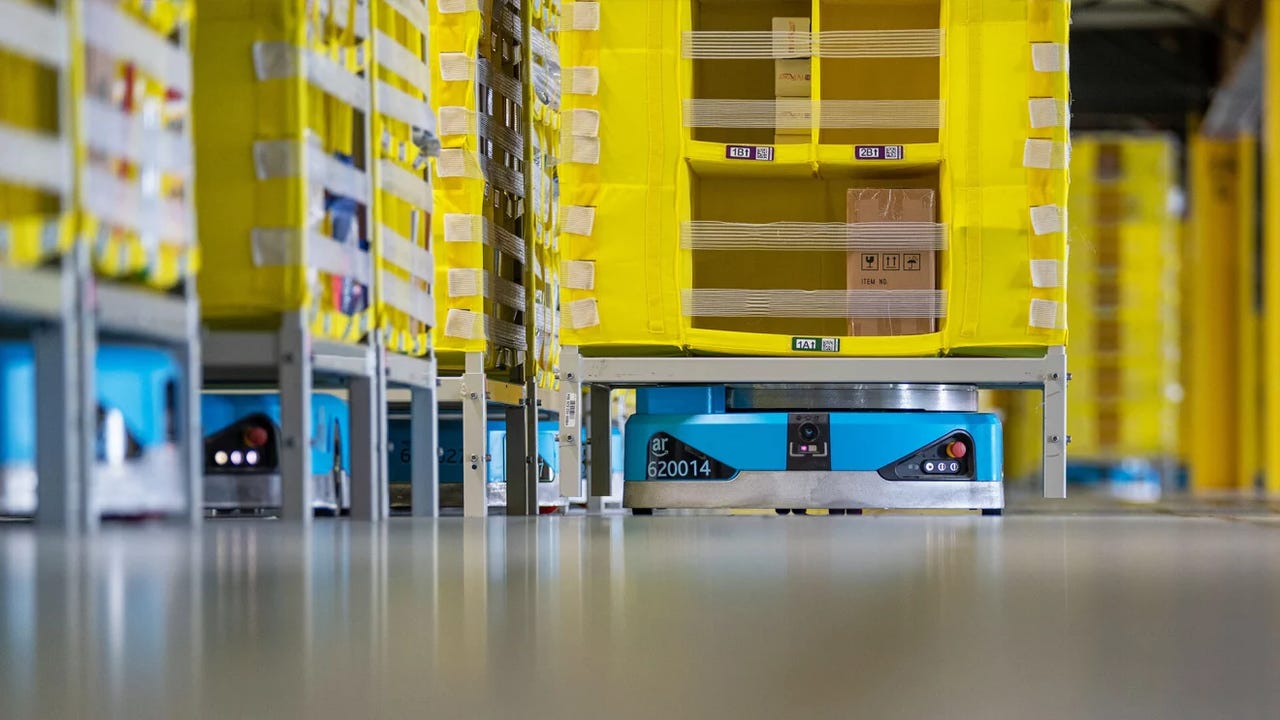Amazon builds its first fully autonomous mobile robot for warehouses


Amazon will soon deploy the Proteus robot in fulfillment and sorting centers.
Amazon on Wednesday showcased its first-ever fully autonomous mobile robot for warehouses. The robot, called Proteus, will soon be deployed in fulfillment centers and sort centers, 10 years after Amazon established its robotics business with the acquisition of the robotics firm Kiva Systems.
The e-commerce giant has long said its ultimate aim is to build warehouse robots that work "alongside" humans rather than replacing them. Unlike other warehouse robots, Proteus can actually safely work "alongside" humans.
"Historically, it's been difficult to safely incorporate robotics in the same physical space as people," Amazon explained in a blog post. "We believe Proteus will change that while remaining smart, safe, and collaborative."
With advanced safety, perception, and navigation technologies, Proteus can autonomously move around people while doing its work, so it doesn't have to be limited to restricted areas.
The robot, which looks sort of like a Roomba, will first be deployed to handle GoCarts -- the non-automated, wheeled carts used to move packages through facilities. It slides right under a GoCart, lifts it up and takes it where it needs to go. Automating GoCart handling like this should help reduce the need for people to manually move heavy objects through a facility, Amazon says.
Amazon also shared that it's prototyping a robotic arm called Cardinal, which can handle packages up to 50 lbs. It uses AI and computer vision to select one package out of a pile of packages, lift it, read the label, and precisely place it in a GoCart. Using Cardinal speeds up package processing time by converting batch-based manual work into continuous, automated work.
Amazon expects to deploy the technology in fulfillment centers next year.